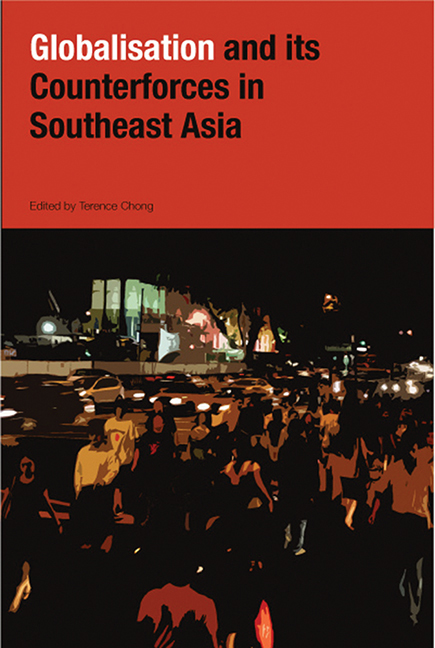Book contents
- Frontmatter
- Contents
- Foreword
- Preface
- The Contributors
- Introduction
- Part I The Political Contradictions of Globalization
- Part II Economic Regionalism and Global Influences
- Part III Local Security, Global Insecurity
- Part IV Social Processes: Arrested Development
- 12 Reluctant Tigers: Economic Growth, Erratic Democratization Processes and Continuing Political Gender Inequality in Southeast Asia
- 13 Women's Emancipation in the Philippines: A Legacy of Western Feminism?
- 14 Women's Emancipation in the Philippines: A Legacy of Western Feminism?
- Part V Cultural Production in the Global Matrix
- Index
14 - Women's Emancipation in the Philippines: A Legacy of Western Feminism?
from Part IV - Social Processes: Arrested Development
Published online by Cambridge University Press: 21 October 2015
- Frontmatter
- Contents
- Foreword
- Preface
- The Contributors
- Introduction
- Part I The Political Contradictions of Globalization
- Part II Economic Regionalism and Global Influences
- Part III Local Security, Global Insecurity
- Part IV Social Processes: Arrested Development
- 12 Reluctant Tigers: Economic Growth, Erratic Democratization Processes and Continuing Political Gender Inequality in Southeast Asia
- 13 Women's Emancipation in the Philippines: A Legacy of Western Feminism?
- 14 Women's Emancipation in the Philippines: A Legacy of Western Feminism?
- Part V Cultural Production in the Global Matrix
- Index
Summary
INTRODUCTION: “REGRESSIVE AND ARCHAIC INSTITUTIONS”
Chinese education has a “troubled history” in Malaysia. In the West a strong case is being made about the importance of vernacular schools in producing multi-lingual, multi-cultural and cosmopolitan “polyglot citizens”. This argument about cultural citizenship is largely ignored by the state and the progressive circles in Malaysia; any departure from the state-controlled education is “suffused with anxiety, emotion, and controversy, lending itself so easily to ‘politicization’ ”. Indeed to the state and the critics of vernacular schools, Chinese community'S passionate hold to their need to run their schools and educate their children sounds almost fanatical and quaintly out-of-place in modern, multi-cultural Malaysia. It is striking that at a time when struggle for cultural citizenship is gaining ground in many parts of the world, Chinese education is still charged with so many sins of cultural chauvinism and anti-national development.
Barely two decades ago, in March 1983, key organizations of the Chinese community presented to Ministry of Culture, Youth and Sports a Joint Memorandum on National Culture. Superficially the memorandum was in response to a series of events over the past few years: the announcement of the government intention to review measures to forge a national culture; the foreign minister'S speech in the opening of an exhibition of Turkish art, suggesting that only features of art “based on the Malay identity could be accepted as element of national culture”; and more prosaically, the police refusal to grant permission for Chinese clubs to perform the lion dance in public places. In March–April 1984 the local English daily, The Star, sponsored a debate on national culture; in the passionate exchanges that ensued the issue of Chinese vernacular was brought up. With few exceptions, the opinions of writers — English-educated academics, Malay intellectuals and NGO activists — were universally negative on the role of Chinese schools.
- Type
- Chapter
- Information
- Globalization and its Counter-Forces in Southeast Asia , pp. 313 - 332Publisher: ISEAS–Yusof Ishak InstitutePrint publication year: 2008



